A guide to gemstone meanings
Posted on: 22/10/2025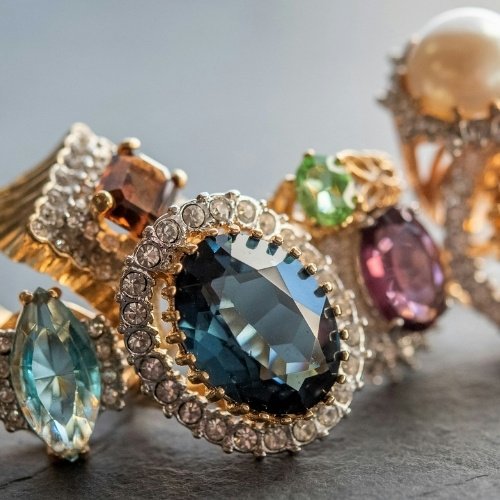
Gemstones have fascinated people for thousands of years, admired not only for their beauty but also for the stories and traditions they carry. From ancient myths and royal treasures to modern-day jewellery, each gemstone has its own unique symbolism and history. This guide will walk you through some of the world’s most beloved gemstone meanings, so you can find out what makes them truly special.
- Agate
- Amethyst
- Aquamarine
- Citrine
- Diamond
- Emerald
- Garnet
- Jade
- Morganite
- Onyx
- Opal
- Pearl
- Peridot
- Ruby
- Sapphire
- Tanzanite
- Topaz
- Tourmaline
- Turquoise
Agate
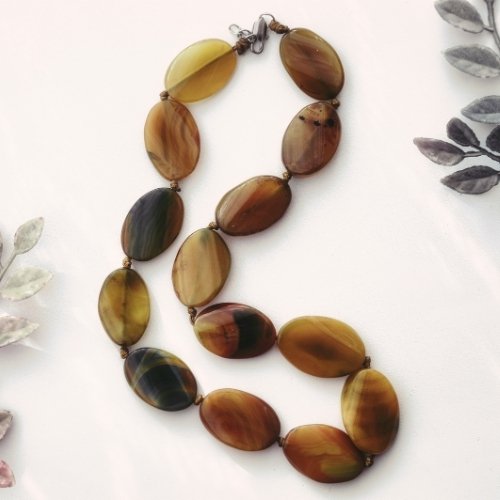
Agate meaning: Strength, balance, and grounding energy
Popular for its layered look, agate naturally appears in
colours such as black, brown, grey, and green, but is sometimes dyed to vibrant
shades of blue, pink, or purple. The stone forms within volcanic rocks as
layers of silica build up over time, creating the distinctive swirls, stripes,
and mottled patterns that make every agate completely unique.
Beyond its beauty, agate has long been associated with protective and grounding properties. Celebrated since ancient times, it was highly valued and often carved into amulets and talismans believed to provide strength and protection.
Amethyst
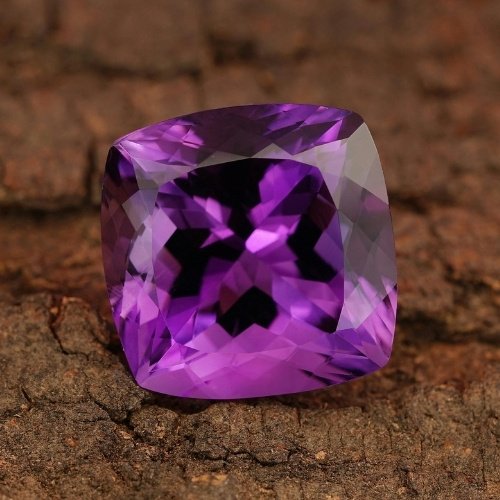
Amethyst meaning: Calm, clarity, and protection
Amethyst is a bold purple stone that traditionally signifies
calm, clarity, and protection. It's these properties that secured the stone's
place in jewellery history. The name comes from the ancient Greek word amethystos, meaning "not drunken". It's said that the Greeks used to drink
from amethyst cups, as they thought it would prevent them from getting drunk!
Amethyst jewellery was a firm favourite among
ancient Egyptians, too, for its perceived protective qualities. It was also
worn by bishops and royalty during the Middle Ages, often set into rings or
crosses. Its deep violet tones were associated with wisdom and good fortune,
making it a gemstone of status and reverence.
Amethyst's colour and brilliance make it a popular choice
for jewellery today. As the February birthstone, it’s also a meaningful gift
for someone born during this month.
Aquamarine
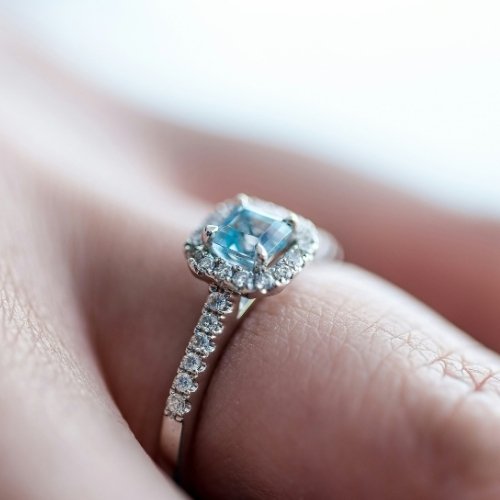
Aquamarine meaning: Tranquillity, clarity, and harmony
Aquamarine is a captivating gemstone celebrated for its
serene blue tones that range from pale sky blue to deeper sea shades. Its name
comes from the Latin aqua marina,
meaning "water of the sea," reflecting both its colour and its
long-standing connection to the ocean. Symbolically, aquamarine jewellery has been associated with
tranquillity, clarity, and harmony, often believed to calm the mind and bring
courage to its wearer.
In the past, sailors carried aquamarine amulets as a
talisman of protection against the dangers of the sea. In ancient lore, it was
also said to strengthen relationships, making it a fitting choice for gifts of
love. It's no surprise that aquamarine is traditionally gifted to couples on
their 19th wedding anniversary. It's also the March birthstone.
Citrine
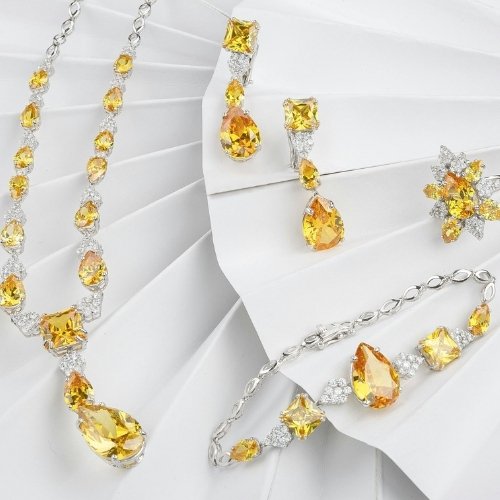
Citrine meaning: Joy, prosperity, and energy
Citrine is a vibrant gemstone characterised by its golden
honey hues. Often thought of as a gift from the sun, it has long been
associated with joy, prosperity, and energy. Known as the "merchant’s
stone", citrine has been cherished throughout history for its believed to
attract wealth, success, and abundance.
It's this symbolism that makes citrine jewellery a great gift for someone starting a new venture, such as a new job or promotion, or as a graduation gift. As the November birthstone, citrine holds special significance, offering a splash of brightness during the darker months of the year.
Diamond
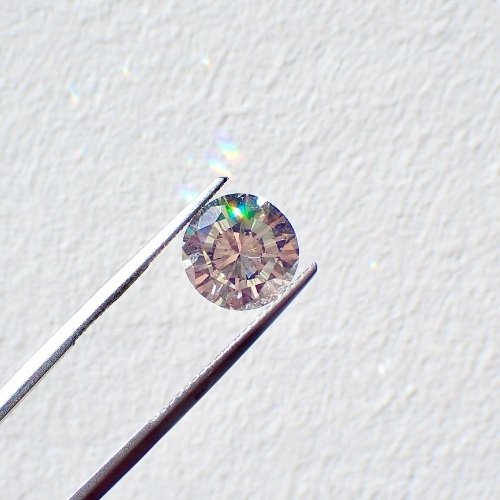
Diamond meaning: Love, commitment, and endurance
Diamonds are the world’s most iconic
gemstones, treasured for their brilliance, strength, and timeless beauty. Known
as the ultimate symbol of love, diamonds are most famously associated with engagement
rings but are equally dazzling in earrings, necklaces, and bracelets.
As the hardest natural material on Earth, diamonds score a
perfect 10 on the Mohs scale of mineral hardness, making them
exceptionally durable and ideal for everyday wear. Their unmatched sparkle
comes from the way they reflect light, giving them a fire and radiance that few
other gemstones can rival.
Throughout history, diamonds have been prized as tokens of
power and luxury, worn by royalty and admired across cultures. Beyond their
beauty, they are also the April birthstone and are often given to celebrate milestone anniversaries, like the 60th
anniversary, or life’s most meaningful moments, like Christenings.
Synthetic diamonds, also known as lab-grown diamonds, are real diamonds created
in controlled laboratory conditions rather than mined from the earth. They
share the exact same physical and chemical properties as natural diamonds; the
key difference lies in their origin.
You can find out more about this precious gem in our guide
to understanding diamonds, as well as our guide
to lab-grown diamonds.
Emerald
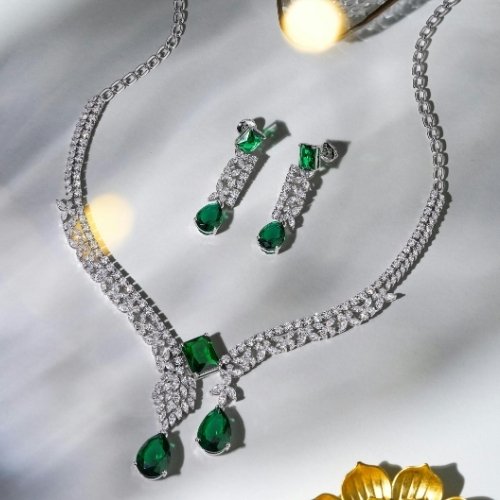
Emerald meaning: Renewal, growth, and vitality
Emerald is one of the most treasured gemstones in the world,
instantly recognisable for its rich green colour that symbolises renewal,
growth, and vitality. Belonging to the beryl family, emeralds range in shade
from light, bright greens to deep, velvety tones. They often have natural
inclusions, called the stone’s "jardin" (French for
"garden"), as they can resemble moss and foliage, giving the gemstone
a unique garden-like appearance.
Steeped in history, emeralds were adored by ancient
civilisations such as the Egyptians, who associated them with eternal life and
protection. Cleopatra herself was famously enamoured with emerald jewellery.
Over time, they became symbols of love, wisdom, and prosperity, making them a
favourite gemstone for royalty and nobility across the globe.
Today, emerald jewellery remains highly prized. As
the May birthstone, emerald holds special significance, gifted for birthdays or
milestone anniversaries like the 55th anniversary.
Garnet
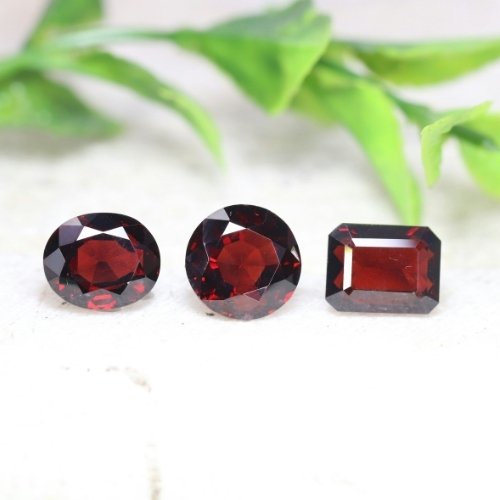
Garnet meaning: Love,
loyalty, courage, and strength
Garnet is a striking gemstone best known for its deep red
hues, though it actually comes in a wide spectrum of colours, including vibrant
greens and oranges. Its name comes from the Latin granatus, meaning "seed-like," because the red variety so
closely resembles the seeds of a pomegranate. With a history spanning thousands
of years — from ancient Rome and the Middle Ages to the Victorian era — garnet
remains one of the world’s most enduringly admired gemstones.
Thanks to its deep red colour, garnet is most commonly
associated with love and relationships, making it a meaningful choice for engagement and wedding
rings. As the January birthstone, it also represents loyalty,
courage, and strength, making garnet jewellery a lovely gift for someone
born in this month.
Jade
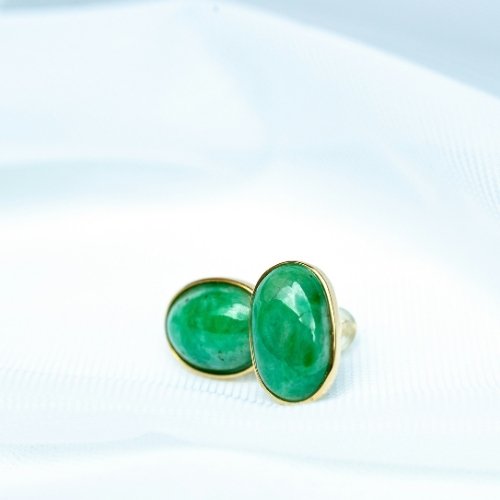
Most commonly seen in shades of green, jade can also appear
in white, pink, lavender, yellow, and even black, each variety offering a
unique charm. The stone is prized not only for its beauty but also for its
symbolism of harmony, balance, and protection, making it a meaningful choice in
jewellery and ornamental pieces.
Historically, jade has been highly revered, especially in
East Asian cultures, where it has been used for thousands of years in
jewellery, carvings, and ceremonial objects. In China, it was considered the
"imperial gem" and believed to bring good luck, health, and long
life. Beyond Asia, jade was also valued by the Mayans, who saw the gem as
incredibly precious, symbolising water, maize, life, and regeneration.
Durable yet elegant, jade is commonly used in jewellery, and
is a popular anniversary gift for the 35th anniversary.
Morganite
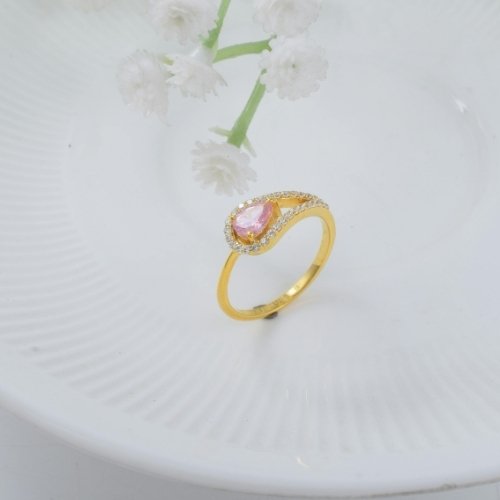
Morganite meaning: Love, compassion, and emotional healing
With a pale pink hue, morganite is commonly associated with
love and romance, as well as compassion and emotional healing. Part of the
beryl family, along with emerald and aquamarine, morganite is prized for its
gentle colour, clarity, and brilliant sparkle.
While most gems on this list have a rich history, morganite is a relatively modern gem. It was discovered in the early 20th century and named after financier and gem enthusiast J.P. Morgan. Its serene, feminine tones make it ideal for jewellery, offering a romantic alternative to more traditional gemstones.
Onyx
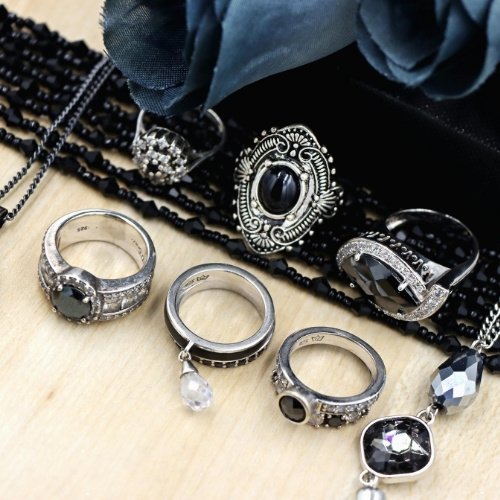
Onyx meaning: Protection, strength, and focus
Onyx is a striking gemstone, instantly recognisable for its
deep black colour, often featuring white bands or layers. The name itself comes
from the Greek word for "claw" or "fingernail". According
to legend, Aphrodite was resting when her son Cupid clipped her fingernails
with the edge of his arrow. The nail clippings fell into the river, and because
no part of a goddess could truly perish, the Fates transformed them into stone,
creating onyx.
In ancient cultures, onyx was believed to offer protection,
strength, and focus, making it a popular talisman for warriors and travellers.
Today, it’s still associated with grounding energy and resilience, often seen
as a stone of inner strength and stability. This makes it an ideal gift for
milestones such as graduations or career changes. Onyx is also a popular choice
for men's jewellery, making it great for Father’s
Day or birthdays.
Opal
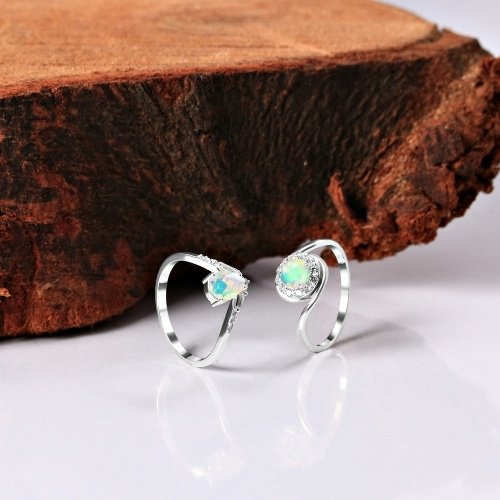
Opal meaning: Hope, creativity, and love
Opal is one of the most captivating gemstones, celebrated
for its dazzling play-of-colour that shifts and shimmers with every movement.
Each stone is unique, with flashes of blue, green, red, and violet as the light
hits its surface.
The history of opal stretches back thousands of years. The
ancient Romans adored it, believing it to be the most precious of all gemstones
because it contained the colours of every other stone. In Arabic folklore,
opals were thought to fall from the heavens during thunderstorms, carrying
flashes of lightning within them.
Today, opal is the birthstone for October and is often
gifted to celebrate 14th wedding anniversaries. With its enchanting beauty and
deep symbolism of hope, creativity, and love, it remains one of the most poetic
gemstones in the jewellery world.
Pearl
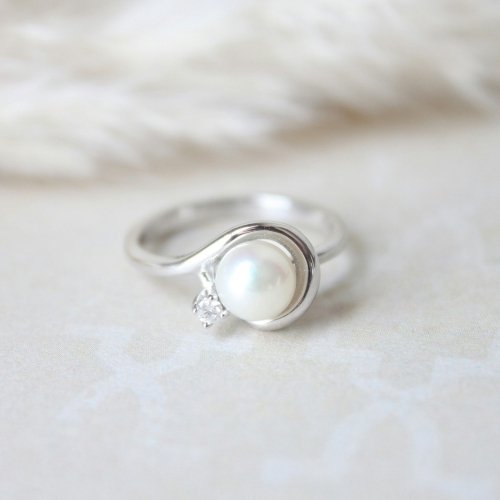
Pearl meaning: Purity, wisdom, and new beginnings
Pearl is one of the most timeless and elegant gems,
treasured for its soft lustre and natural beauty. Unlike most gemstones, which
are mined from the earth, pearls are organic, formed inside oysters and certain
molluscs. This makes them truly unique among precious gems.
The history of pearls is as rich as their glow. In ancient
Rome, pearl jewellery was considered the ultimate
status symbol, reserved for the wealthy elite. In Greece, they held a similar
standing and were believed to be the tears of the gods. In Chinese culture,
pearls were believed to symbolise wisdom and were often given as gifts of
protection. During the Renaissance, they became known as "the queen of
gems," adored by royalty and nobility across Europe.
Pearls carry deep symbolism, often representing purity,
wisdom, and new beginnings, which is why they have long been associated with bridal jewellery. They are also the birthstone
for June and are traditionally gifted on 30th wedding anniversaries.
Peridot
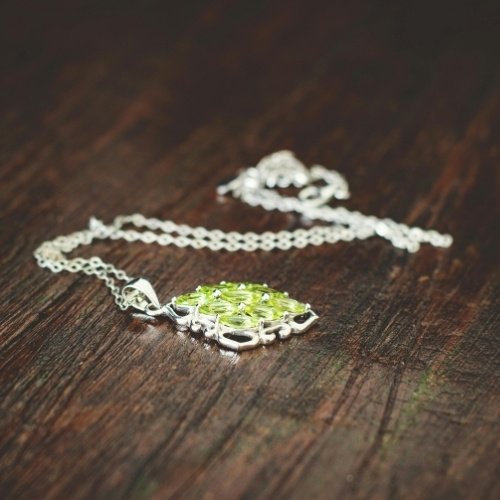
Peridot meaning: Positivity, renewal, and protection
Peridot is a vibrant gemstone with a bright, green hue that
ranges from lime to olive. Because peridot forms deep within the Earth’s mantle
and is brought to the surface by volcanic activity, it has long been associated
with fire and the power of the Earth.
The history of peridot stretches back thousands of years.
Ancient Egyptians mined it on the island of Zabargad in the Red Sea and called
it the "gem of the sun," believing it carried protective powers. In
medieval Europe, it was worn to ward off evil spirits, while Hawaiian folklore
linked peridot to the tears of Pele, the goddess of volcanoes and fire.
Today, peridot is the birthstone for August and is
traditionally gifted for 16th wedding anniversaries. Its lively green colour
makes it an ideal choice for birthdays, milestones, or as a meaningful token of
luck and renewal.
Ruby
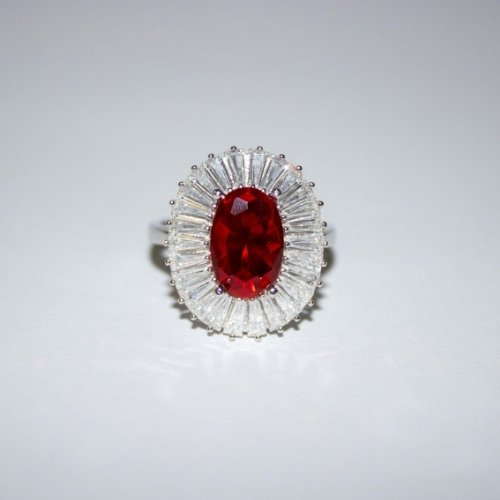
Ruby meaning: Strength, love, passion, and courage
Ruby is one of the most treasured gemstones in the world,
celebrated for its deep red colour and powerful symbolism. Its name comes from
the Latin ruber, meaning
"red," and throughout history it has been regarded as a stone of
passion and courage.
In ancient India, they were called the "king of
precious stones" and thought to protect warriors in battle. In Burma
(modern-day Myanmar), where some of the finest rubies are still found, they
were believed to bring invincibility when worn close to the skin. In fact, some
warriors had rubies implanted under their skin, particularly in areas that were
vulnerable. In medieval Europe, rubies were seen as symbols of wealth, love,
and divine power, often set into crowns and royal jewellery.
Today, ruby is the birthstone for July and the traditional
gift for the 40th wedding anniversary, representing enduring love and strength.
Its vibrant hue makes it a popular choice for engagement rings and statement ruby jewellery.
Sapphire
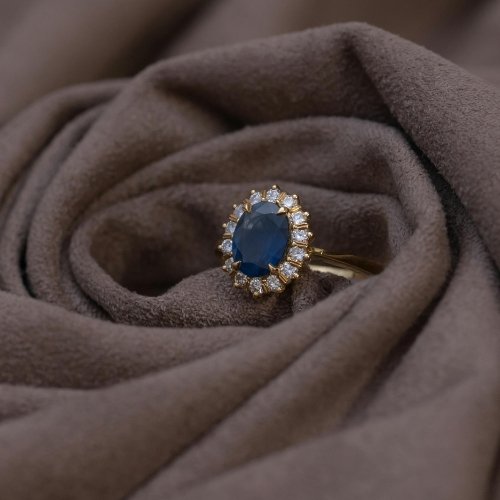
Sapphire meaning: Wisdom, loyalty, nobility, and protection
Sapphires are popular for their rich blue tones. In ancient
Persia, people believed the sky was painted blue by the reflection of sapphire
stones. However, these gems can come in a rainbow of other colours, including
pink, yellow, and green.
Sapphire jewellery has been prized across
cultures and throughout centuries. During the Middle Ages, clergy and royalty
wore sapphires as symbols of purity, truth, and protection from envy or harm.
Kings often set sapphires into their rings and crowns, believing the stone
would guard them from betrayal and bring divine favour.
Historically prized for its beauty and rarity, sapphire
has long symbolised wisdom, loyalty, and nobility, making it a popular choice
for engagement rings, wedding rings, and heirloom jewellery today.
Tanzanite
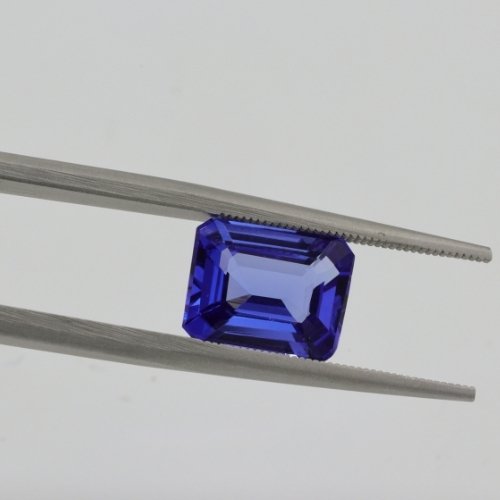
Tanzanite meaning:
Transformation, calm, and intuition
As one of the rarest gemstones, tanzanite is prized for its
vivid blue-violet hues that shift beautifully in different lighting. Like
morganite, tanzanite is a relatively modern gemstone, discovered only in 1967
in the foothills of Mount Kilimanjaro in Tanzania. Its name reflects its
origins, as it can only be found in this one small region of the world, making
it rarer than diamonds.
Despite its recent discovery, tanzanite has quickly become
associated with transformation and spiritual growth, believed to stimulate
intuition and bring a sense of calm. It's also recognised as the birthstone of
December, and is often gifted on the 24th wedding anniversary. Its rarity and
striking beauty make tanzanite jewellery a meaningful choice for
those seeking something modern, precious, and truly unique.
Topaz
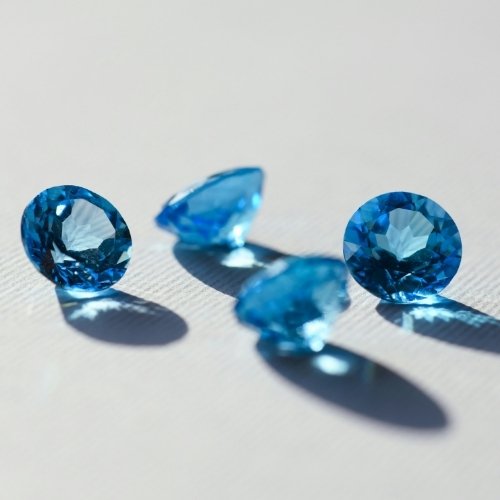
Topaz meaning: Love, protection, and fortune
The second birthstone of November, topaz is a striking
gemstone admired for its brilliant clarity and wide spectrum of colours. It's
most commonly available as a light blue gem, but can also be found in rich
golden tones, deep pinks, and more.
This beautiful stone has had strong links to gods and the
divine throughout history. In ancient Egypt, it was linked to the sun god Ra,
believed to hold protective powers. The Romans associated it with Jupiter, the
god of the sky, while in medieval times, topaz jewellery was worn as a talisman to
guard against harm and attract good fortune.
Tourmaline
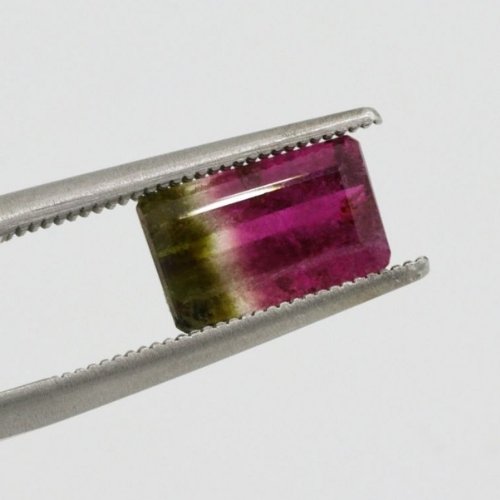
Tourmaline meaning: Balance, creativity, and protection
Another October birthstone, Tourmaline is one of the most
colourful gemstones, admired for its incredible range of shades that span from
vibrant pinks and greens to deep blues and even multi-coloured stones. Its name
comes from the Sinhalese word turmali,
meaning "stone of mixed colours," referring to both its variety and
its unique ability to display more than one colour in a single gem.
With a history stretching back centuries, tourmaline has
been prized for its beauty and mystical qualities. Some ancient cultures, such
as the ancient Romans, believed it could protect against negative energy, while
in the Renaissance, it was thought to inspire artistic expression and
creativity. Its enduring reputation as a stone of balance and harmony has made
it a favourite in jewellery making even today.
Turquoise
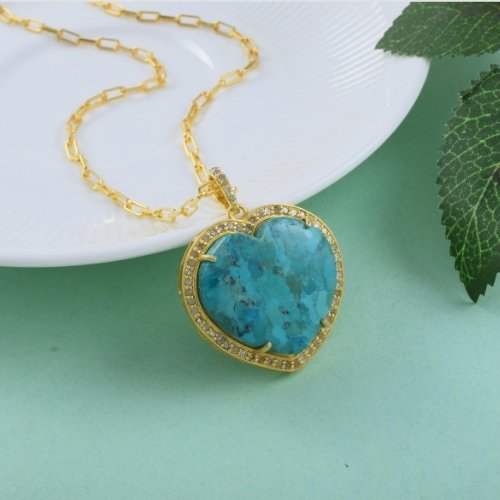
Turquoise meaning:
Protection, wisdom, and friendship
Another December birthstone, turquoise is famous for its
striking blue-green hue. Unlike many other gems, turquoise is opaque, with a
smooth, waxy lustre that makes it instantly recognisable.
With a history spanning over 5,000 years, turquoise has been
cherished by cultures across the globe. The ancient Egyptians set it into
jewellery for pharaohs, and archaeologists have found turquoise jewellery in
Egyptian tombs dating all the way back to 3000 BCE.
Native American tribes also revered turquoise, seeing
it as a sacred stone of protection, wisdom, and connection to the sky. It was
often used in amulets, ceremonial jewellery, and even weaponry to bring
strength in battle.
In ancient Persia, turquoise was worn to guard against misfortune and was thought to change colour if danger was near. By the medieval period, it had become a coveted gem across Europe, symbolising both wealth and status, and was a popular choice for royals and nobility.
A gemstone's beauty goes far beyond jewellery. Each one carries a rich history and unique symbolism that makes it truly special. Whether you're searching for the perfect gift for an occasion or marking a birthday with a meaningful birthstone, our collection of men's, women's, and children's jewellery at Chapelle has something for you.
